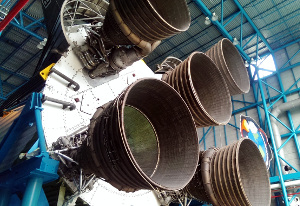 Science, Technology, Engineering, and Mathematics (STEM) and Science, Technology, Engineering, Arts and Mathematics (STEAM) are terms used to group together these academic disciplines. The terms have often been used when describing education policy and curriculum for improving competitiveness in the sciences and technology. In 2012 the US government claimed “a world-class STEM workforce is essential to virtually every goal we have as a nation — whether it’s broadly shared economic prosperity, international competitiveness, a strong national defense, a clean energy future, and longer, healthier lives for all Americans.” Excellence in education is linked to high performing economies with critical thinking skills forming the core. It is generally recognised that innovation and science are critical for the creation of new jobs and economic prosperity.
Science, Technology, Engineering, and Mathematics (STEM) and Science, Technology, Engineering, Arts and Mathematics (STEAM) are terms used to group together these academic disciplines. The terms have often been used when describing education policy and curriculum for improving competitiveness in the sciences and technology. In 2012 the US government claimed “a world-class STEM workforce is essential to virtually every goal we have as a nation — whether it’s broadly shared economic prosperity, international competitiveness, a strong national defense, a clean energy future, and longer, healthier lives for all Americans.” Excellence in education is linked to high performing economies with critical thinking skills forming the core. It is generally recognised that innovation and science are critical for the creation of new jobs and economic prosperity.
What may have started as a push to increase national competitiveness in the areas of Engineering and the Sciences has evolved to be much more than this. The skills and knowledge necessary to survive and thrive in the world today (and increasingly so for our children) is radically different from what was needed for previous generations. The traditional education silos where we teach core subjects independently of each other is increasingly coming under fire for being less than effective. Instead an interdisciplinary approach with an increased focus on critical thinking, creativity, collaboration, communication, citizenship and character building is both more efficient, engaging for the students and effective.
For use on this site we use the terms STEM and STEAM interchangeably with the term STEM predominantly used due to greater name recognition. Most programs and topics that we have here that apply to one will generally apply to the other as well. See the next section on STEAM for more on it’s critical importance.
STEM or STEAM?
What’s the difference between STEM and STEAM and why do we care? With STEM’s focus on integration with other disciplines, why is the inclusion of the Arts so special? Why don’t we promote language, history, or other subjects instead? Or why the need to promote any at all given STEM’s open inclusion of other disciplines and it’s breaking down of educational silos?
STEM is about far more than only the improvement of skills in the four stated disciplines. Success in the new era, even more than before, is defined not only by what you know, but by what you can do with what you know. Creativity, innovation, problem solving and entrepreneurship are critical thinking skills that need to be mastered to be successful in the new world.
There is no greater integrity, no greater goal achieved, than an idea articulately expressed through something made with your hands. We call this constant dialogue between eye, mind, and hand “critical thinking – – critical making.” It’s an education in getting your hands dirty, in understanding why you made what you made, and owning the impact of that work in the world. It’s what artists and designers do.
John Maeda, STEM to STEAM: Art in K-12 Is Key to Building a Strong Economy, October 2012
The arts help students practice envisioning, the creation of an image from an idea in their heads. They also learn spatial thinking, the ability to see three-dimensional space in their heads from two dimensional drawings or concepts. Students become more comfortable with open-ended questions and problems by taking things apart, playing with them, and rebuilding. They learn to adapt their own thinking when unexpected things happen and to ask new questions. This bridging of concepts learned from the arts and STEM subjects is what fuels innovation.
Teachers Network Involvement
Successful STEM programs provide students access to real-world, applied learning. Being able to play with, manipulate and combine concepts in real-world projects provides for multiple entry points and ways of engagement for the student. In addition to the core subjects being taught, skills in the areas of problem solving, critical and creative thinking, collaboration, and communication are essential for future success and are nurtured. Through these programs they learn to think differently, how to push boundaries, and solve problems. They learn how to think on their own and how to apply learned knowledge to real-world problems.
Teachers Network was originally setup as a platform to promote the collaboration and publication of STEM related information. We’ve taken a bit of a step back in the building of this community collaborative site however as the site begins to solidify and we get a broader coverage of subjects we will again refocus our efforts on STEM specific issues. In particular we will be increasingly promoting the Maker area and education in the areas of electrical engineering and computer science.
Working Groups
We host many groups on this site, both public and private, for assisting with the collaboration and sharing of education related information between colleagues. If you don’t see what you are looking for and need a space to work, share and collaborate let us know. As long as it fits within the scope of what we do we’ll be happy to set it up for you.
The following teachers-network groups are involved with STEM/STEAM related topics:
- STEM for Young Learners – The focus on student’s acquisition and development of science, technology, engineering, and mathematics (STEM) skills for the future workplace is starting increasingly early. Or is it? One way to think about STEM is as a philosophy – a way of thinking about how educators and parents at all levels should be helping students integrate knowledge across disciplines and to encourage them to think in a more connected and holistic way. Workable and practical approaches are presented and discussed here for the integration of STEM and computing into existing English training.
References
Government and NGOs
STEM – Compilation of many good STEM related articles – George Lucas Educational Foundation
Science, Technology, Engineering and Math: Education for Global Leadership – US Department of Education
Federal Science, Technology, Engineering, and Mathematics (STEM) Education 5-Year Strategic Plan (2013) – Committee on STEM Education National Science and Technology Council
Science, technology, engineering, and mathematics – Wikipedia
Project Lead the Way – PLTW’s mission is to prepare students for the global economy by providing K-12 STEM programs to public, private, and charter schools in all 50 states and the District of Columbia – Wikipedia
AP + Project Lead The Way – College Board
STEAM
STEM to STEAM: Art in K-12 Is Key to Building a Strong Economy – John Madea, October 2012
The Art of Thinking Like a Scientist – Lisa Yokana, ASCD, January 2014
Projects
SeaPerch – Curriculum designed program that teaches students basic skills in ship and submarine design and encourages them to explore naval architecture and marine and ocean engineering concepts – Wikipedia
Fun Underwater Robotics – SeaPerch Home Page
Research
Early Learning in STEM – Multimodal Learning in the 21st Century – Project Report, Victoria University, Australia
Misc
Engaging Children in STEM: Best Practices – Resources for Early Learning
Silos in Education: How to Break Them Down with These Tips – Bridget Zahradnik – leaderinme.org
Tearing Down the Silos in K-12 Curricula – Alexandra Owens, January 2017
The Silo Effect – Eric Sheninger, December 2016
The STEaM Channel – UC San Diego


